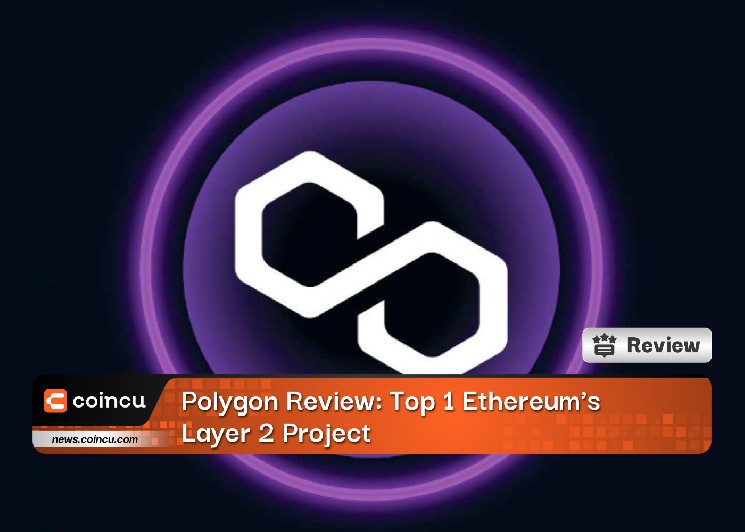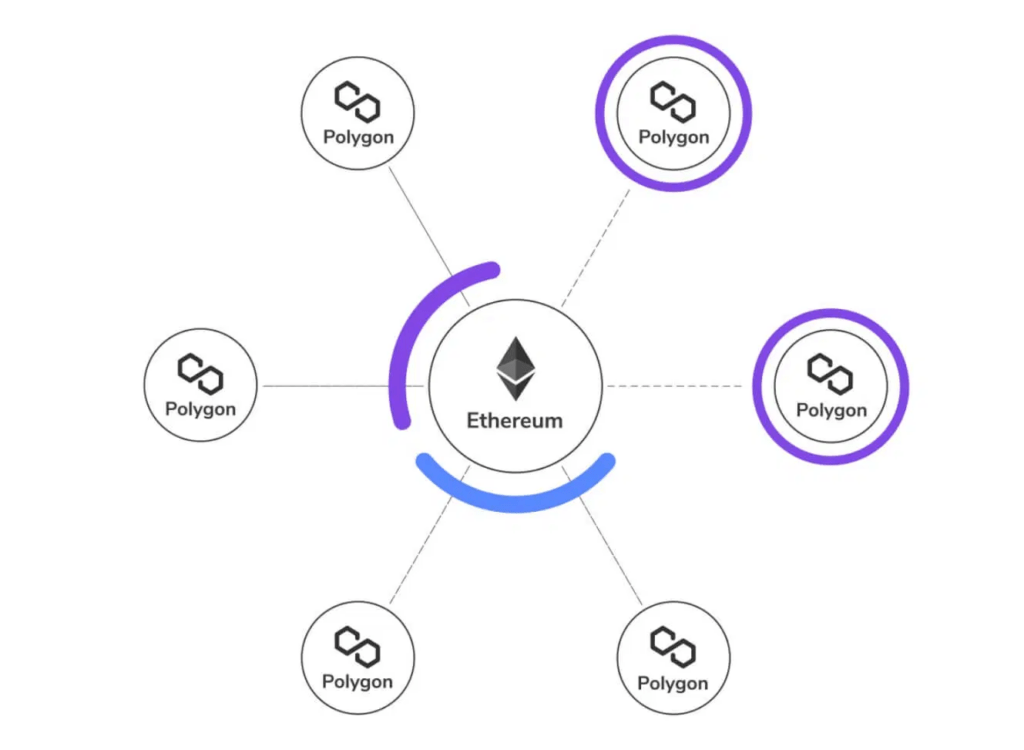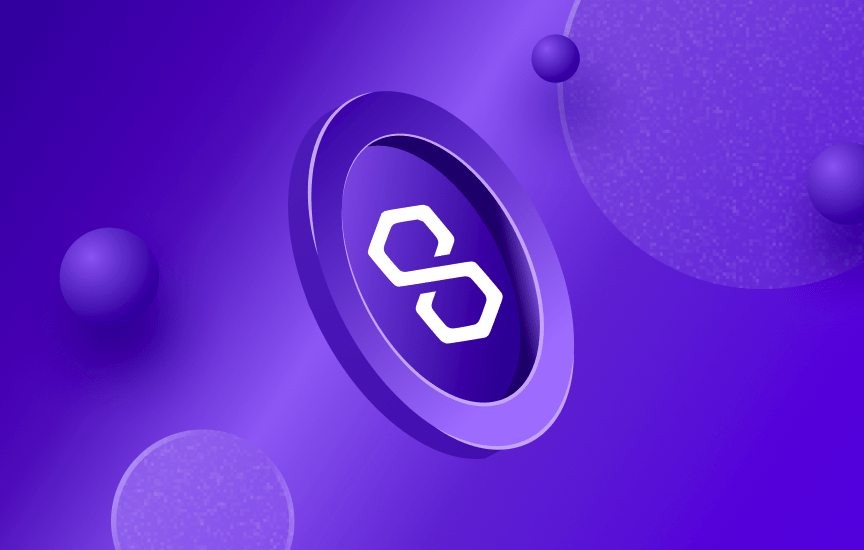Polygon Review: Top 1 Ethereum’s Layer 2 Project

Polygon considers 2023 to be a very favorable moment since the DeFi ecosystems on the network are expanding and evolving tremendously, particularly the key sectors of DeFi and NFT.
Even though the Ethereum network’s congestion issues have not been totally resolved, Layer 2 solutions continue to demonstrate their superiority. Polygon, formerly Matic Network, has lofty goals of deploying all Layer 2 solutions on it.
What is Polygon?
The Matic Network platform was Polygon’s forerunner. Matic Network chose to change its name to Polygon in February 2023 in order to broaden the scope of the project and produce a universal scaling solution. This is a two-tier network project built on the Ethereum platform.
Polygon was intended to address scalability concerns while maintaining decentralization and making the most of the current developer environment. The decentralized application (dApp) feature has been created on top of the platform itself to affirm a vital role for the Ethereum ecosystem by extending and improving the user experience.
Polygon is essentially a Layer 2 scaling solution that uses side chains for off-chain computing while still assuring asset safety owing to the Plasma framework and the Proof-of-Stake (PoS) decentralized authentication network. As a consequence, it can entirely ensure user security and safety. Moreover, the platform is anticipated to make payments using digital assets at near-instantaneous speeds.
The network originally released the testnet in September 2018, and the network’s most recent pre-mainnet version has been finished. Several projects have constructed apps and integrated with Polygon as a result of various specific utilities.
It is a Layer 2 scaling solution based on Sidechain that is supported by Binance and Coinbase. Polygon focuses on the Ethereum ecosystem, seeing the platform as a connecting chain.
It is a user-friendly, well-structured, high-quality platform for Ethereum scaling and infrastructure development. Polygon’s fundamental component is the network SDK, a versatile, modular platform for developing many sorts of apps.
It serves to expedite the evolution of Ethereum into an efficient multi-chain ecosystem, commonly known as the “Internet of Blockchains,” by making versatile and simple-to-use tools accessible to developers. Users may utilize Polygon to generate Optimistic Rollup Chains, ZK Rollup Chains, and other sorts of Sidechains.
The network architecture
The system of the Polygon is divided into four layers: the Ethereum layer, the security layer, the Polygon network layer, and the execution layer. The Ethereum layer is essentially a collection of smart contracts that run on top of Ethereum. These smart contracts manage transaction closure, staking, and communication between Ethereum and the multiple Polygon chains.
Meanwhile, the security layer is a Sidechain that runs alongside Ethereum. A sidechain is a semi-independent blockchain that runs alongside a connected main chain to boost its speed or capabilities. A validator is provided by the security layer, enabling chains to benefit from an additional layer of security. The Ethereum layer, as well as the security layer, are both optional.
Significantly, two layers are necessary. The Polygon layer is the first. This is the ecosystem of blockchain networks. Each of these networks has its own community and is in charge of achieving community agreement and generating blocks. The implementation class is the second. This is the implementation layer for the Ethereum Virtual Machine (EVM), which is used to execute smart contracts.
Because of Polygon’s interoperability, chains created on it may interact with one another and with the Ethereum main chain. This would enable decentralized apps (dApps) to connect easily and trade across platforms.
The network highlights
The project’s highlight is that it is not just integrating PoS Chain and Plasma solutions. Polygon will eventually support all Layer 2 solutions, including zk Rollups, Optimistic Rollups, Stand-Alone Chains, and Shared Security Chains.
How does it work?
Polygon’s Sidechain operates similarly to other Proof-of-Stake-based blockchains. Apart from the fact that exchanges are clustered and resolved over the Ethereum mainchain, its structure, token, client nodes, local dApps, validator nodes, and so on are identical to other networks.
Thankfully, Polygon has created a layer-2 network that allows for the creation of interoperable, Ethereum-viable blockchain networks.
Polygon’s modular architecture for creating bespoke networks allows developers to transmit pre-configured blockchain networks with a single click. Moreover, The network enables any blockchain to easily collaborate with another blockchain.
Consider the Sidechain to be a useful part of the enormous Ethereum cosmos, providing customers with prominent project execution and a positive working experience. Any Ethereum-based decentralized program or another Ethereum-viable blockchain may be switched to the Sidechain to run in a much better environment.

Clients wishing to interact with decentralized programs that have migrated to the Sidechain must:
- Validate the ostensible Predicate Contract communicated on the Ethereum network, locking the coins to be delivered on the Sidechain.
- Tokens will be automatically placed on the Sidechain when the predicate contract is confirmed. During this cycle, a smart contract called “RootChainManager” triggers another smart contract called “ChildChainManager,” which generates the appropriate amount of bolted or stored tokens on the network.
- When clients accept their tokens on the Sidechain, users may instantaneously transfer tokens to anybody they wish for a little cost. Sidechain blocks are faster (about 1 second or less). The transaction will be completed fairly immediately this way.
Users may remove leftover tokens from the main chain if they so want by demonstrating evidence of remaining tokens on the original contract on the Ethereum chain.
Features of Polygon
- Scalability: Matic sidechain transactions are quick, low-cost, and safe, with accuracy accomplished on the main chain with Ethereum as the first suitable layer-1 database.
- High throughput: on the internal testnet, a single sidechain may reach up to 7000 TPS. Additional chains will be added to allow for horizontal scaling.
- User experience: Smooth user experience and developer abstraction from the main chain to Polygon. Support for native mobile apps and SDKs, as well as WalletConnect.
- Security: Polygon operators are also PoS system stakeholders.
- The network sidechains are public by nature, permissionless, and capable of supporting many protocols.
Polygon vs. Ethereum
To comprehend Polygon, you must first grasp Ethereum and blockchain development jargon.
First, blockchain engineers confront a quandary known as the “blockchain trilemma” when it comes to balancing trade-offs between decentralization, security, and scalability.
Numerous projects are adopting Ethereum-compatible blockchains to overcome these constraints while still benefiting from Ethereum’s robust ecosystem. Unfortunately, there is no dedicated infrastructure for creating such blockchains or a protocol to link them. This poses considerable development issues and environmental fragmentation.
It’s no secret that Ethereum has flaws. The top 2 cryptocurrency, in particular, has a scalability issue, as seen by the speed with which transactions are completed.
Ethereum has prioritized decentralization and security at the price of scalability. As a consequence, transactions may be costly and time-consuming. That’s where Polygon comes in, with its emphasis on quicker transaction speeds and cheaper fees than Ethereum.
Layer 1 blockchains, like Ethereum, offer a platform for developers to create and operate dApps, smart contracts, non-fungible tokens (NFTs), and other applications. Polygon is a Layer 2 blockchain that tries to aid Ethereum with scalability.
The network, being a Layer 2 protocol, does not seek to replicate Ethereum’s features. Instead, it aids in improving transaction speeds and lowering development costs.
MATIC token
Key metrics
- Token Name: Polygon
- Ticker: MATIC
- Blockchain: Ethereum, Polygon
- Token Standard: ERC-20
- Contract: 0x7D1AfA7B718fb893dB30A3aBc0Cfc608AaCfeBB0
- Token Type: Utility
- Total Supply: 10,000,000,000 MATIC
- Circulating Supply: 8,734,317,475 MATIC

Token Allocation
- Token Sale: 19%
- Seed Sale: 2.09%
- Early Supporters: 1.71%
- Team: 16%
- Advisor: 4%
- Established Fund: 21.86%
- Ecosystem: 23.33%
- Staking Reward: 12%
Use case
Polygon’s native cryptocurrency is MATIC. It’s an ERC-20 token, which means it was generated on the Ethereum network.
This token is used to regulate and safeguard the network, as well as to pay transaction fees on the network.
Core team
- Jaynti Kanani, Co-Founder: Chief Executive Officer (CEO). Web3, Plasma, and Walletconnect contributor. Jaynti formerly worked as a data scientist at Housing.com.
- Sandeep Nailwal, Co-Founder: Chief Operating Officer (COO). Entrepreneur and blockchain coder. Sandeep was formerly the CEO of Scopeweaver and the CTO of Welspun Group.
- Anurag Arjun, Co-Founder: Chief Production Officer (CPO). Anurag formerly worked at IRIS Business as an AVP (Product Manager).
Prior to launching its own platform in 2019, the team made significant contributions to the Ethereum ecosystem. The Plasma MVP, the WalletConnect protocol, and the widely known Dagger event notification engine have all been successfully deployed on Ethereum.
Conclusion
Polygon has seen rapid development in recent years after the demise of major DeFi ventures such as Sushiswap, 1inch, and Aave. Meanwhile, Polygon has collaborated with partners such as Bitmax to establish a bridge straight to The network at a reasonable cost, which is another crucial component in Polygon’s ability to draw users from other networks.
Looking at the workings and potentials of Polygon, it can be considered that this platform has shown significant progress in addressing blockchain scaling difficulties. Additionally, various blockchain developers may enjoy creating their own decentralized network using the polygon platform’s given features and tools, which allow developers to access customization choices.
Several projects are now working on Layer 2 solutions to tackle difficulties on the Ethereum network. But, in terms of the development ecosystem on it, Polygon is the most established platform.
DISCLAIMER: The Information on this website is provided as general market commentary and does not constitute investment advice. We encourage you to do your own research before investing.






 Bitcoin
Bitcoin  Ethereum
Ethereum  Tether
Tether  USDC
USDC  TRON
TRON  Dogecoin
Dogecoin  Cardano
Cardano  Bitcoin Cash
Bitcoin Cash  Chainlink
Chainlink  LEO Token
LEO Token  Stellar
Stellar  Monero
Monero  Zcash
Zcash  Litecoin
Litecoin  Hedera
Hedera  Dai
Dai  Cronos
Cronos  OKB
OKB  Tether Gold
Tether Gold  Ethereum Classic
Ethereum Classic  KuCoin
KuCoin  Gate
Gate  Algorand
Algorand  Cosmos Hub
Cosmos Hub  VeChain
VeChain  Dash
Dash  Tezos
Tezos  Stacks
Stacks  TrueUSD
TrueUSD  IOTA
IOTA  Basic Attention
Basic Attention  Theta Network
Theta Network  Decred
Decred  NEO
NEO  Synthetix
Synthetix  Qtum
Qtum  Ravencoin
Ravencoin  0x Protocol
0x Protocol  DigiByte
DigiByte  Zilliqa
Zilliqa  Nano
Nano  Numeraire
Numeraire  Siacoin
Siacoin  Waves
Waves  Ontology
Ontology  Enjin Coin
Enjin Coin  Status
Status  BUSD
BUSD  Pax Dollar
Pax Dollar  Hive
Hive  Lisk
Lisk  Steem
Steem  Huobi
Huobi  NEM
NEM  OMG Network
OMG Network  Augur
Augur  Bitcoin Gold
Bitcoin Gold  Ren
Ren  Bitcoin Diamond
Bitcoin Diamond